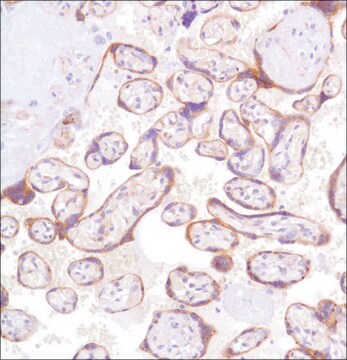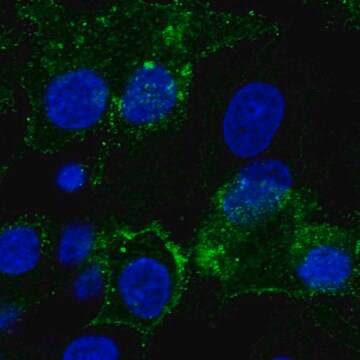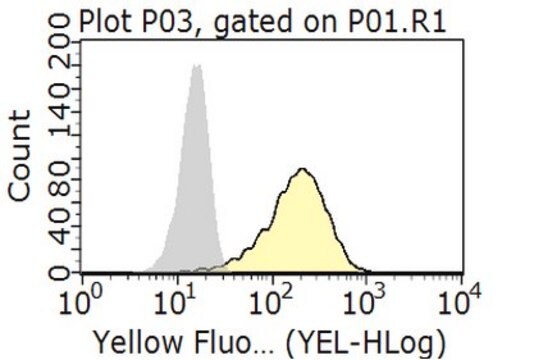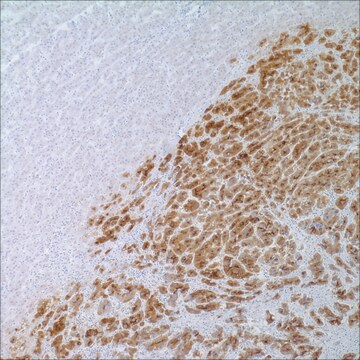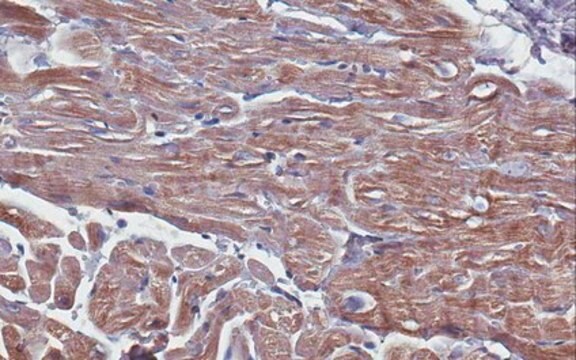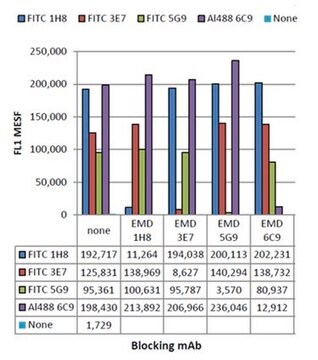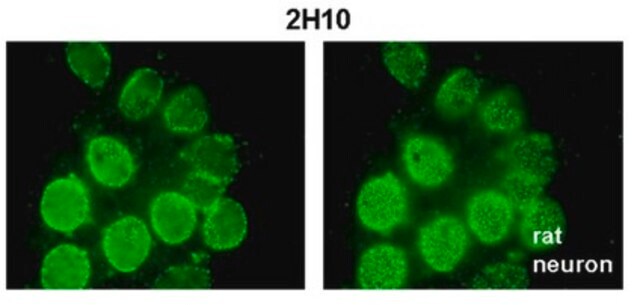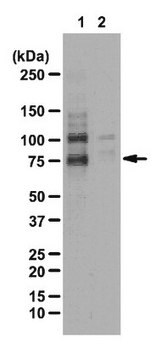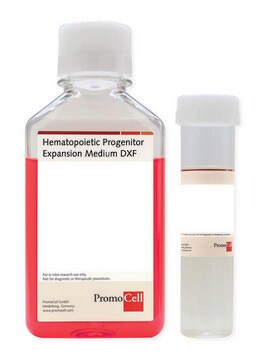MABC667
Anti-GPC3 Antibody, clone 9C2
ascites fluid, clone 9C2, from mouse
Sinónimos:
SGB, DGSX, MXR7, SDYS, SGBS, OCI-5, SGBS1, GTR2-2, Glypican-3, Intestinal protein OCI-5
About This Item
Productos recomendados
biological source
mouse
Quality Level
antibody form
ascites fluid
antibody product type
primary antibodies
clone
9C2, monoclonal
species reactivity
mouse, human
technique(s)
flow cytometry: suitable
immunofluorescence: suitable
immunohistochemistry: suitable
western blot: suitable
isotype
IgG1
UniProt accession no.
shipped in
wet ice
target post-translational modification
unmodified
Gene Information
human ... GPC3(2719)
General description
Immunogen
Application
Immunofluorescence Analysis: A 1:200-1,000 dilution from a representative lot detected GPC3 in HeLa cells.
Flow Cytometry Analysis: A 1:200-400 dilution from a representative lot detected GPC3 in Jurkat cells.
Optimal working dilutions must be determined by end user.
Apoptosis & Cancer
Apoptosis - Additional
Quality
Western Blotting Analysis: A 1:500-2,000 dilution of this antibody detected GPC3 in mouse liver, HepG2, HEK293, Jurkat, SK-N-SH, PC-12, and F9 cell lysates.
Target description
Physical form
Storage and Stability
Analysis Note
Mouse liver, HepG2, HEK293, Jurkat, SK-N-SH, PC-12, and F9 cell lysates
Disclaimer
¿No encuentra el producto adecuado?
Pruebe nuestro Herramienta de selección de productos.
signalword
Danger
hcodes
Hazard Classifications
Aquatic Chronic 3 - Repr. 1A
wgk_germany
WGK 2
flash_point_f
Not applicable
flash_point_c
Not applicable
Certificados de análisis (COA)
Busque Certificados de análisis (COA) introduciendo el número de lote del producto. Los números de lote se encuentran en la etiqueta del producto después de las palabras «Lot» o «Batch»
¿Ya tiene este producto?
Encuentre la documentación para los productos que ha comprado recientemente en la Biblioteca de documentos.
Nuestro equipo de científicos tiene experiencia en todas las áreas de investigación: Ciencias de la vida, Ciencia de los materiales, Síntesis química, Cromatografía, Analítica y muchas otras.
Póngase en contacto con el Servicio técnico